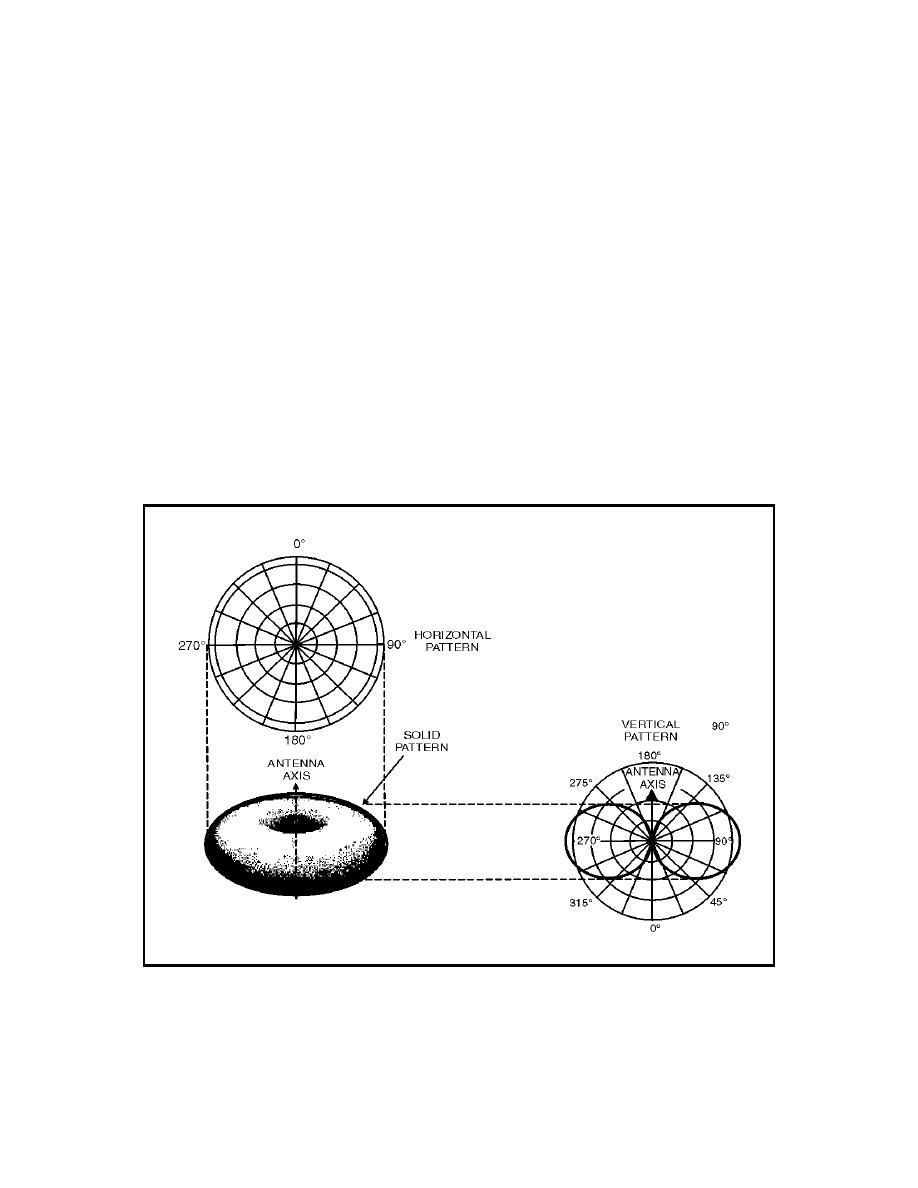
TC 9-64 _________________________________________________________________________
4-79. From a practical viewpoint, the doublet antenna can be mounted either
vertically or horizontally. The doublet shown in figure 4-15 is mounted
vertically, and the radiated energy spreads out about the antenna in every
direction in the horizontal plane. Because ordinarily the horizontal plane is
the useful plane, this arrangement is termed nondirectional. The directional
characteristics of the antenna in other planes are ignored. If the doublet were
mounted horizontally, it would have the effect of turning the pattern on edge,
reversing the patterns given in figure 4-15. The antenna would then be
directional in the horizontal plane. The terms "directional" and
"nondirectional" are used for convenience in describing specific radiation
patterns. A complete description always involves a figure in three
dimensions, as in the radiation pattern of figure 4-15.
4-80. Radiation pattern of a dipole. The radiation pattern of a dipole
(figure 4-16) is similar to that of the doublet (figure 4-15). Increasing the
length of the doublet to one-half wavelength has the effect of flattening out
the radiation pattern. The radiation pattern in the horizontal plane of a
dipole is a larger circle than that of the doublet. The vertical-radiation
pattern lobes are no longer circular. They are flattened out and the radiation
intensity is greater.
Figure 4-16. Radiation Pattern of a Dipole
4-24



 Previous Page
Previous Page
